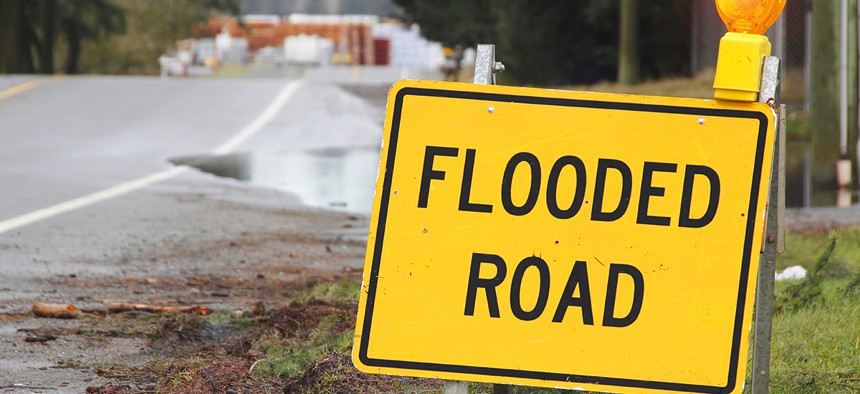National Weather Service System #Fail, Bogus Flash Flood Warning Issued

Modfos/Shutterstock.com
National Weather Service forecasters in Sterling, Virginia, had to clarify -- via Twitter -- no actual warning had been issued.
A "major network issue" upended forecasts and warnings from the National Weather Service, as thunderstorms darkened the central part of the country on Wednesday, The Washington Post reports.
In the D.C. metro area, the outage prompted the issuance of a bogus flash flood warning.
National Weather Service forecasters in Sterling, Virginia, had to clarify -- via Twitter -- no actual warning had been issued.
NWS, part of the National Oceanic and Atmospheric Administration, blamed the technical difficulties on a service “interruption” that began 10:30 a.m. The data integrity issues were resolved 2:30 p.m., the agency said.
But just after the flow of data was being restored, the Weather Service broadcast the false flash flood warning for D.C. at 2:40 p.m.
Citizens have suffered several NOAA information glitches dating back to 2013.
This time, the Weather Service’s National Centers for Environmental Prediction, which sent out a message 11:37 a.m., said the issue affected data inside the agency and external information to customers. The source of the data disturbances was not specified.
In a statement explaining Wednesday's outage, the agency said it is trying to update its IT.
“The National Weather Service is in the process of executing network and infrastructure upgrades that will reduce the likelihood of a similar outage in the future,” it said. “These upgrades should be completed by December.”
“It appears the entire NWS is dead in the water,” Dan Sobien, president of the Weather Service’s labor union, said during the mishaps. “I don’t know if anything is getting out.”
Sobien said the disruption halted routine dissemination of at least two severe thunderstorm warnings in the central United States and a flood warning in the Midwest.
But according to the agency, those warnings were still available on NOAA weather radio and at Weather.gov, and that forecast offices used social media to disseminate alerts during the downtime.
In the fall of 2014, NOAA made the call to shut down some satellite data systems after a suspected Chinese hack. The intrusion occurred in late September of that year. The outage cut off information vital to disaster planning, aviation, shipping and scores of other crucial uses, officials said at the time.





